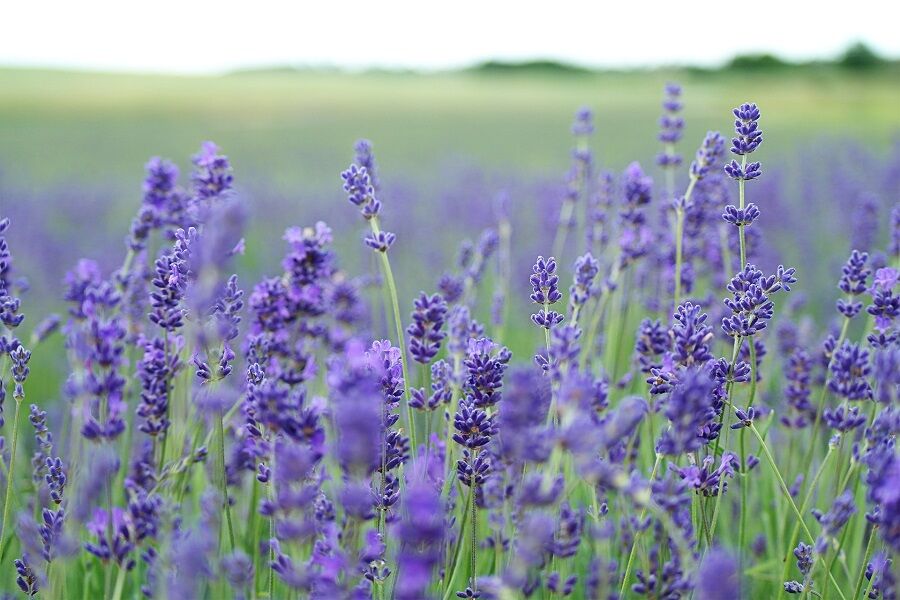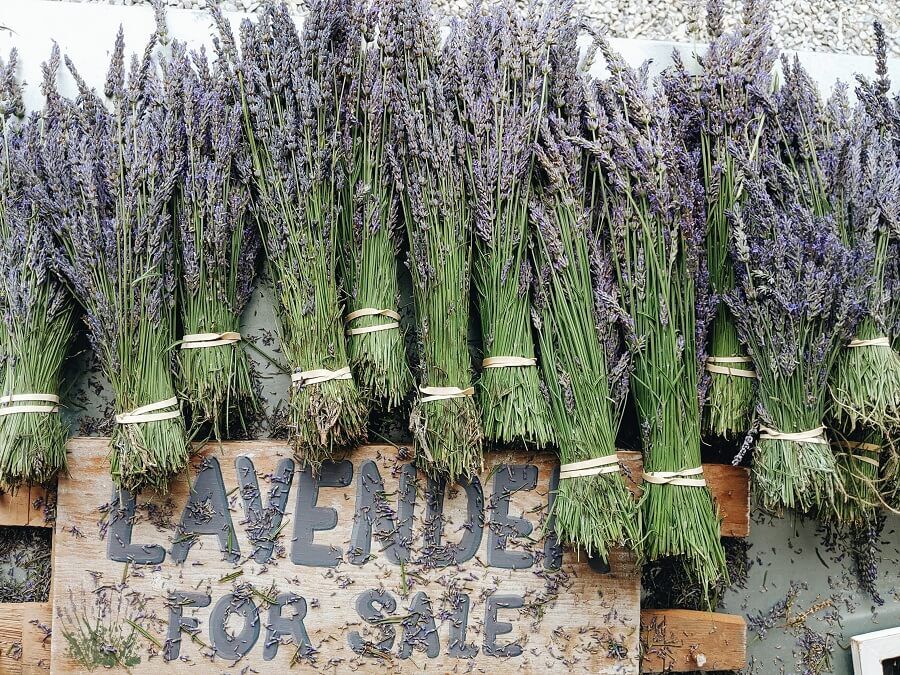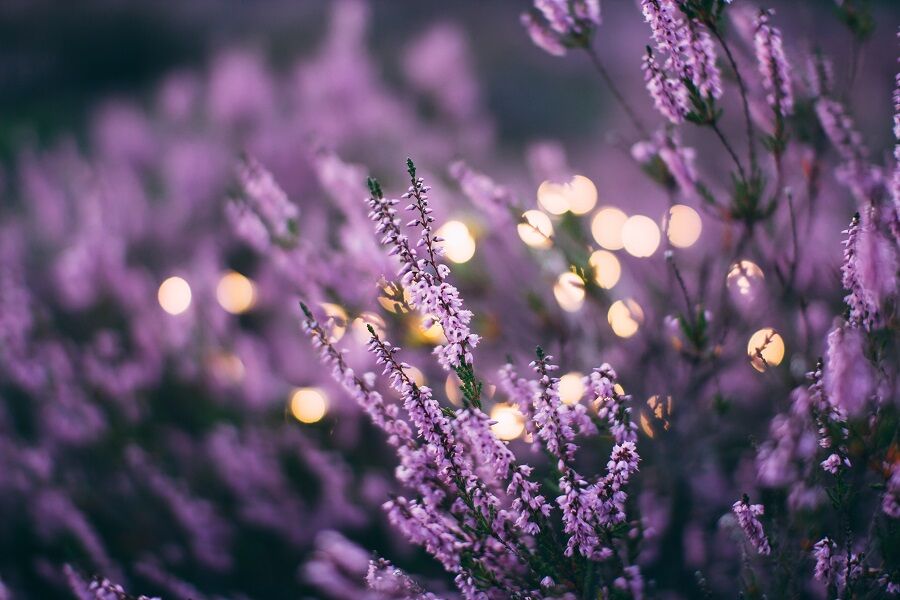For the Love of Lavender
Understanding Spices
Your cart is empty.
SUBTOTAL
£0.00

Understanding Spices
Great swathes of purple with hues of mauve, pink and blue – the inspiration for famous paintings and amateur photographs alike. Fields of lavender! Stunning vistas from which the imagination is able to conjure up that wonderful, distinctive sweet fragrance as deserving of attention today as it has ever been. A member of the mint family, the herb lavender is a flowering plant of which there are many types. It grows to a height of two to three feet and thrives on relatively poor soil. The distinct unforgettable scent comes from its buds and flowers which are usually harvested by hand. The intensity of their scent increases with the drying process. Not only is it an obvious choice for perfumes but it has unexpected properties that extend its usefulness in surprising ways.
From Provence (France) to Hokkaido (Japan), from Oregon (USA) to Victoria (Australia), the magnificence of these ‘seas’ of lavender flowers from across the globe draws crowds of sightseers enjoying one of life’s breathtaking summer experiences. South Africa, China, Croatia, South Korea – just a few of the countries with a contribution to make in the production of this most feted of herbs. Not to be outdone, England boasts equally stunning displays in Norfolk, Kent, Yorkshire and Somerset as well as many other counties and provides us with arguably the very best lavender.

The word ‘lavender’ (scientific name ‘lavandula’) originates from the Latin ‘lavare’ meaning ‘to wash’ and has been grown for at least 2.500 years. Its perfume was prized in Biblical times. The Romans and Ancient Greeks valued it not only for its looks and fragrance but for its many other health – giving properties. The Ancient Egyptians even used lavender in the process of mummification – embalming bodies after death as a means of preserving them.
Elizabeth I was known to adorn her surroundings with vases of lavender and is said to have indulged in the delights of lavender jam!
Lavender was generally regarded as the bringer of good luck and hung over doors, was believed to keep evil spirits at bay. The special role it has played over the centuries continues to this day though possibly in less sinister guises!
As an ornamental, aromatic herb, lavender is found universally in aristocratic settings, in herb gardens and the most humble of back yards. When cut it is a decorative addition inside the home and its depth of fragrance makes it the perfect air freshener. Add to this its ability to repel moths and other insects (including the ‘nit’ of hair fame) and it becomes an essential ally!
All parts of the plant can be used as culinary aids. Enjoyed in sweet and savoury dishes, it can be blended with other herbs (often combined with rosemary), make an interesting cake decoration, lavender ‘sugar’ and premium honey. We add culinary lavender to some of our spice blends including Ras-el-Hanout and Herbs de Provence.

Lavender has many health giving properties not immediately apparent. It is an antiseptic, an antibacterial, an antifungal, an anti inflammatory and an antimicrobial. It is used to sooth and heal all manner of skin conditions including wounds. In 1910 Rene Maurice Gattefosse accidentally discovered that essential oil of lavender used in the treatment of burns had significant healing properties. (Great care, however, must be taken when using any essential oil to avoid sensitivity issues and allergic reactions.) It also performs well in the eradication of human and animal fleas!
Lavender is known to relieve pain and to have a positive effect on gastro-intestinal disorders, breathing problems and headaches.
Lavender has, for a very long time, been known to have other therapeutic powers. With its soothing and calming fragrance it can raise mood, memory and appetite, relieve anxiety, depression and stress, generally lifting flagging spirits. With calming, cooling properties it is invaluable in promoting relaxation and restful sleep.
As a proven restorative and aid to well-being essential oil of lavender (used with caution) has played a considerable role in the growth of aromatherapy.
As an all round natural, non toxic champion of good mental and physical health, lavender has much to recommend it.
Capture your own bit of heaven with the clean, floral, uplifting aroma of lavender in a ‘bag’. Enjoy the longer lasting restorative benefits of lavender in addition to those indulgent lavender foot and bath soaks! Freshen up any room, those bedroom drawers and wardrobes. Place one under a pillow, pop one in the car.
They are a great gift idea that can be personalised or decorated to suit any occasion.
Miniature bags, sachets, sacks or pouches – any shape of closely woven breathable fabric can be made quickly and easily with basic sewing skills or non whatsoever!
Materials can be new or recycled. Cotton, linen, satin, silk, muslin or lace – natural or synthetic, patterned or plain – whatever takes your fancy. For decoration – embroidery, lace, ribbon (especially useful as a loop to hang on a coat hanger), sequins or buttons. Experiment – but remember to trim before assembling the finished article!
A good lavender filling or mix would be 2 parts lavender to 1 part rice. The rice will absorb any moisture, tone down the fragrance which can be quite strong and add volume and weight. Don’t overfill the bags to allow air circulation and manipulation of the lavender to refresh its impact after a period of time.
For a basic bag cut 2 squares of about 4 in (10cm) to allow for hemming which can be done by hand or on a machine. For a hidden seam sew 3 sides together with the fabric inside out, clip corners, turn and push the corners out. For a more natural look sew with the right sides on the outside leaving the hem visible. Scoop up the filling and pour in the open side. Stitch this remaining gap not forgetting to insert a ribbon loop if required.
Try a 5in x 3in (13 x 8cm) shape for a mini ‘sack’ and gather one of the narrower sides tying it with ribbon or string for a more rustic feel.
The simplest pouch requires no sewing. Cut a 10 in (26 cm) circle of fabric and leave the edge raw or trim with pinking shears. Place the lavender mix in the centre of the material and gather the edges up together. Tie again with ribbon or string. These last two designs allow the contents to be adjusted at any time in the future – a big advantage.
Experiment with different designs and decorations. With Christmas around the corner and a little bit of imagination, group several together and put in a pretty box as a special and unique festive gift.

Understanding Spices
Spices have long been integral to the UK's culinary landscape, adding depth, flavours, and richness to a myriad of dishes. From the pungent aroma of cumin in Indian curries to...
Read MoreUnderstanding Spices
Confetti is an essential part of any wedding day. Not only is it a wonderful way to greet a newlywed couple, but it also provides some beautiful photo opportunities. The...
Read MoreSeasonal Ideas
It’s no secret that any handmade gift will always be more special than a store-bought one. Homemade food gifts are especially wonderful, a labour of love that shows someone you...
Read MoreHealth and Wellbeing
It’s no secret that winter’s cold and gloomy weather makes us crave indulgent dishes like fondue and baked goods like sticky toffee pudding and apple crumble. While Christmas is the...
Read More